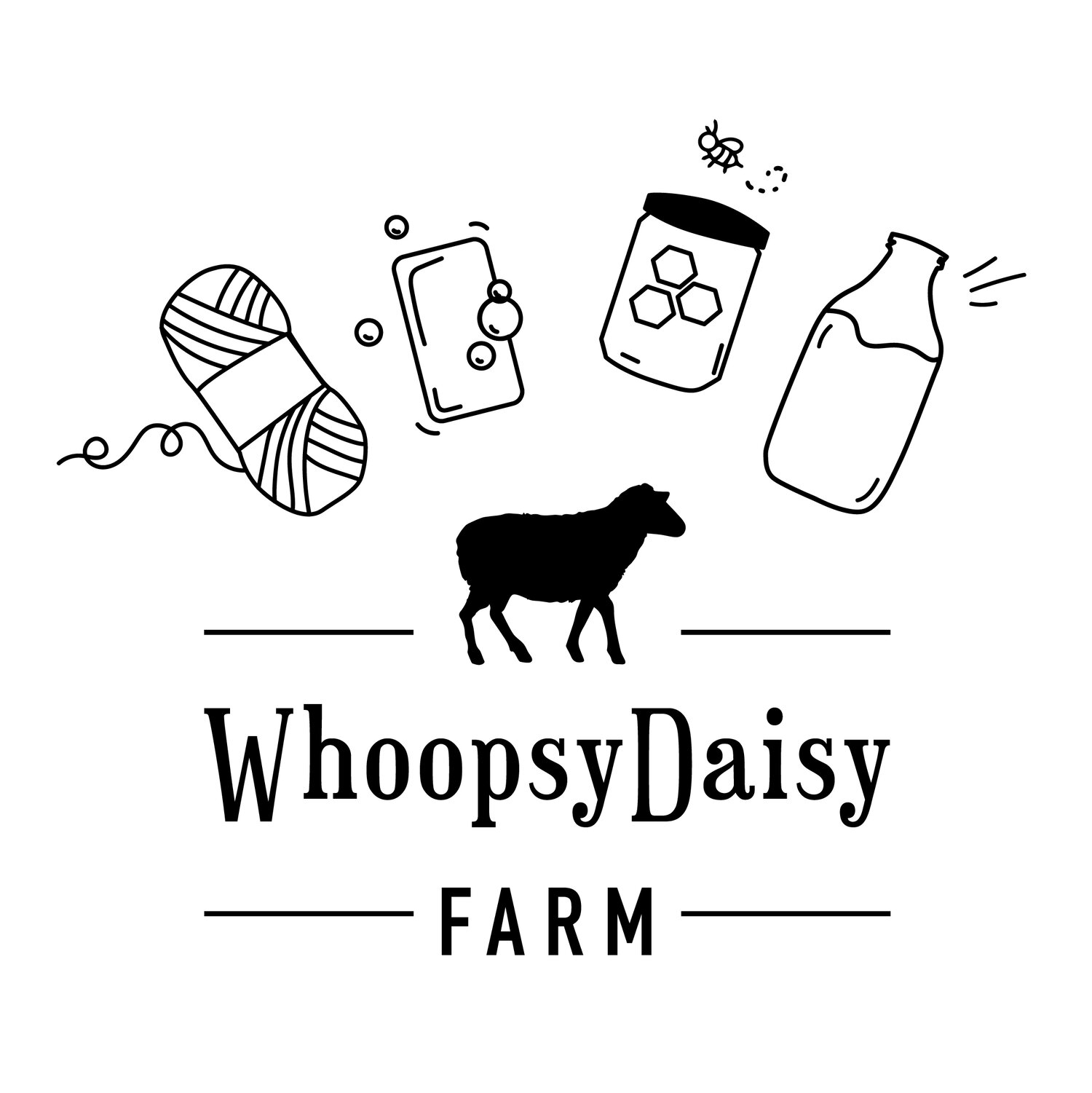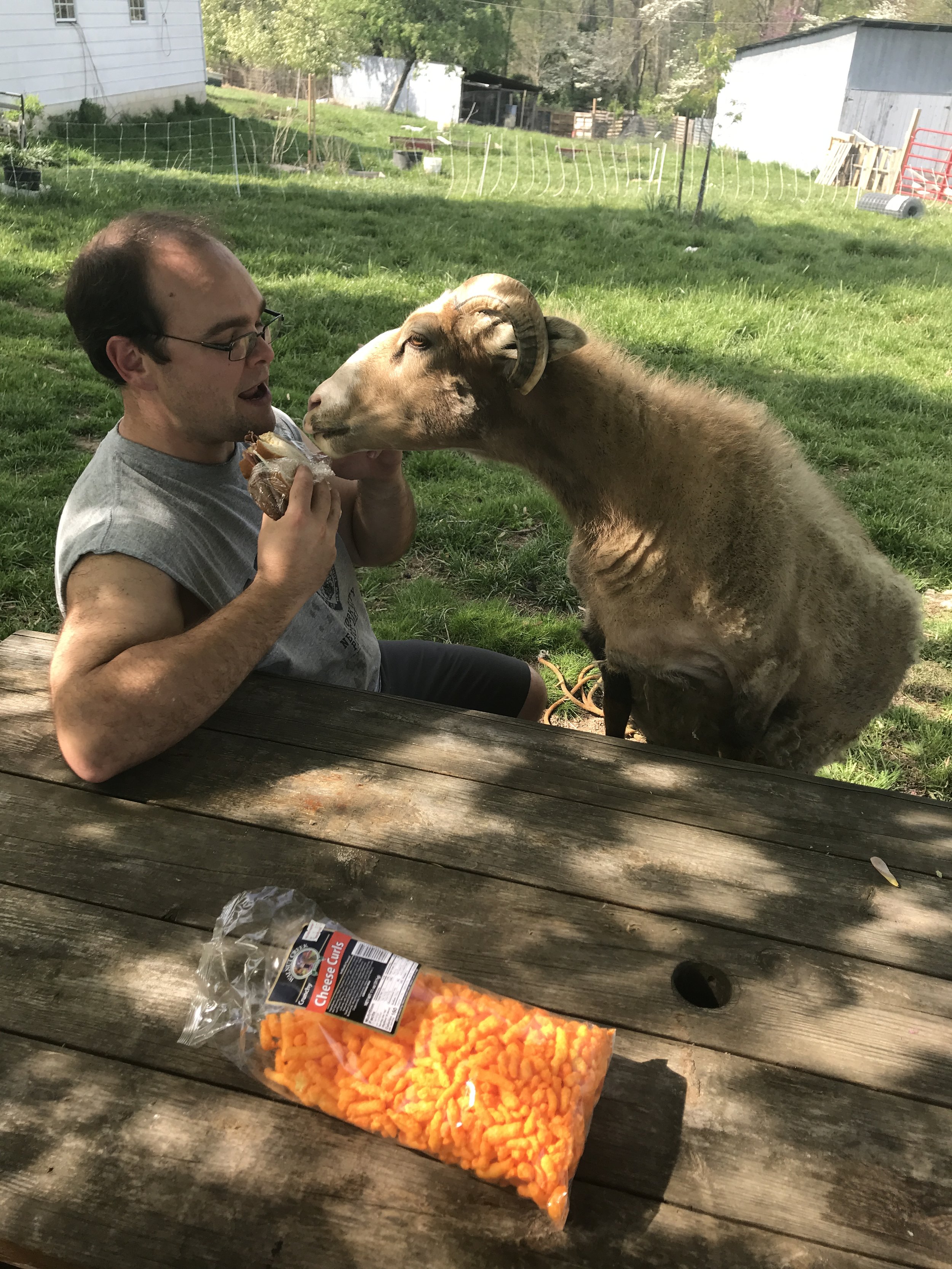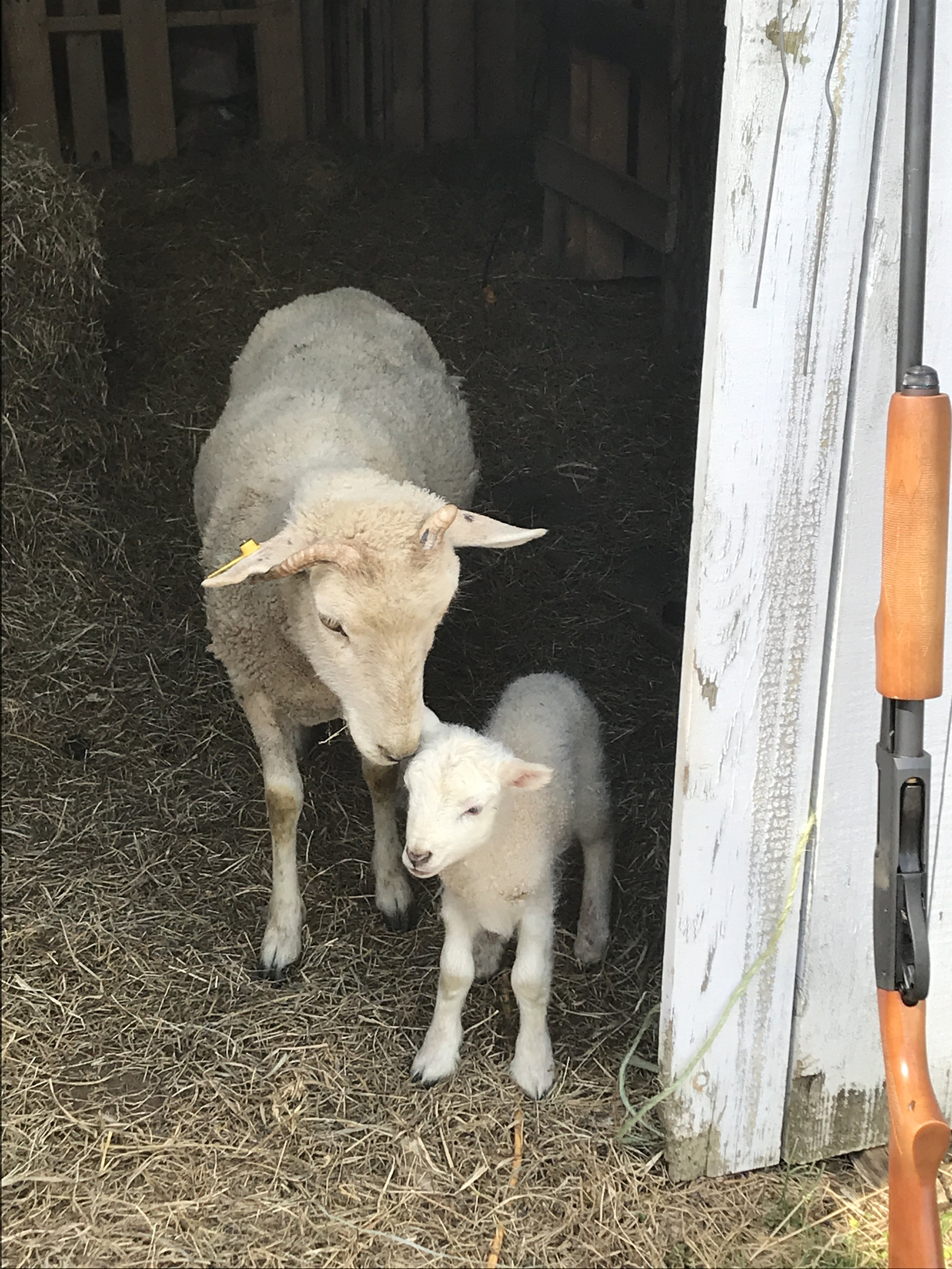Why We Milk Sheep
Why Sheep Milk?
We had originally planned on goats.
Because when you homestead in America, that’s just what you do. You buy chickens and maybe some other poultry species, you keep them successfully for a year or so, and then you decide to ‘graduate’ to the next level of homesteading. And then for some reason we all think we need to buy goats.
I knew that at some point I wanted sheep, and I knew that I wanted to milk them. Why you ask? I shall tell you why.
Eastern European Cheese.
If you’ve talked to me face to face for any length of time, eventually you’ll learn that I went to Romania several times in Highschool and early college on short term mission trips. During those trips I learned what real food was, what it tasted like, how some of it was made (I was present for a hog butchering) and animal’s role in that. In Romania there were two cheeses, branza and cascaval. I ate these cheeses on a sort of potato pancake specific to the region with sour cream and toasted garlic. Each time I ate it I wondered how these delights had fallen behind McDonald’s in the realm of fast food, because it was delicious and satisfying.
The cheese was tangy and hard and unlike any I had ever tasted.
All I was told is that it was a ‘very special Romanian cheese specific to Romania.’
I assumed it was one of those things that made International travel so delightful and irritating - you experienced things that simply could not be reproduced in the States.
In college I discovered a little Russian grocery store next to a Bosnian bakery, where I rediscovered some of the delights I found in Romania such as Milke chocolate and Rosehip jam (Side note - you can now find Milke chocolate in Walmart as the brand has opened warehouses in the States. This is an abomination as they have changed the recipes to match American markets and it just doesn’t taste the same!). They didn’t have branza or cascaval cheese at their little cheese counter. But they did have something else that was similar. The gold toothed Russian store owner told me that this was a special Ukrainian cheese and it was made with sheep’s milk. He then rolled his eyes whenever I came in the store asking for the Ukrainian cheese, because he insisted Russians made lovely cheeses as well. I asked him if there was Russian sheep cheese and he would begin muttering and slicing the Ukrainian one. (I haven’t done the research yet but I assume with all the people groups in Russia there IS a Russian specific sheep cheese. I just don’t know if it has been commercialized to where it can be imported to hungry college students in the USA).
Finally, Trader Joe’s began carrying a Greek style feta cheese - made the traditional way with both goats and sheep milk - and a Palestinian feta cheese made entirely with sheep’s milk. I began gravitating towards the sheep feta.
So cheese was what originally hooked me on sheep’s milk.
A few years later, Kyle and I were part of an Amish herd share and the cow dried up. I, being young in the ways of the raw milk black market and not knowing where on earth we could find another cow with brave owners willing to risk their farm for the sake of my gut flora, panicked. Apparently an Englishwoman panicking in an Amish General store is quite the sight to behold because the store owner’s father in law pulled me aside and said he had some goats in milk. I wrinkled my nose and asked if goats milk was any good. He then took that as a challenge to convert me to goat’s milk.
Now, goat’s milk is a very polarizing subject. You either love it or you hate it. There really doesn’t seem to be anyone who takes the middle ground on goat’s milk, so I shall attempt to be this voice of moderation.
First of all, not all breed creates goat milk equally. There is a huge variation in how stinky the bucks are from breed to breed, for starters. And if one keeps a buck on property so that one can breed the goats and thus have more milk in the future, it can be hard to keep the ‘Bucky’ taste out of the milk… or farm… or your laundry or hair. The reason for this is that apparently unlike humans, goat does find Stank rather attractive… and also goat bucks pee on their beards as a sign of masculine prowess. (I mean it kind of makes sense… if one can preform the acrobatics to get one’s face in line with the stream…. Goat kamasutra? Ok sorry…)
Some goat breeds are less … emphatic in this department.
Secondly, different breeds produce different amounts of butterfat in the milk. The same is true for cows and I believe sheep. Jersey and Guernsey cow milk is notorious for the creamy yellow color the milk gets in the spring and summer and for the cream cap on top of the milk line. Holsteins are notorious for amounts of milk, but no one gets starry eyed over the cream line with the Holstein. Likewise with the goat. A Nubian shall produce far more milk but less butterfat, whereas the Nigerian Dwarf will produce a percentage of the amount of milk, but a comparable amount of cream - because its milk is higher in butterfat.
Thirdly, processing makes a BIG DIFFERENCE. My amish friend explained that goat milk MUST be chilled almost instantly upon being exposed to air otherwise it would get the goaty taste. Some goat farmers kept their milk pail over a block of ice to begin the chilling process instantaneously, or kept a refrigerator in the milking parlor so it could be strained and chilled within moments. Also the equipment had to be washed instantly so that there was no milk residue on the milking equipment.
Finally, it wasn’t pasteurized. For some reason the pasteurization and storage process that commercial goat milk undergoes does something on a chemical level that makes odor and taste a huge factor. Sheep and Cow milk do not seem to respond the same way with pasteurization but goat milk is the rebel and refuses to cooperate with industry standards. (Libertarian milk. I like it.)
So we decided to try the milk. And I will say for the most part we liked it…ish. Our friend owned Saanan goats - the one’s without ears. He bought the breed because they produced a very low odored milk that in taste was comparable to Jersey milk…. Jersey SKIM milk.
This milk had. No. Butterfat.
Like, none.
Both of us lost weight and gut inflammation on the goat milk… and almost all love of milk. When his goats dried up and we found another Jersey herdshare, our weight and gut inflammation came back but our tastebuds overruled our health conscientiousness and we stayed with the cows for a few years.
But after a few years our guts overruled our tastebuds and I knew I had to switch species again.
By this time we owned our own property and were ‘ready’ to upgrade our homestead from two legged creatures to four legged creatures. I started doing homework and in my research found a critically endangered breed of goat known as the San Clemente Island goat. Allegedly this breed’s butterfat content could run from 8-12%, which is the highest amount of butterfat found amongst goats. The bucks were also some of the odorless one could find, which I was also a fan of. I reached out to the breed association, was welcomed with open arms, we were all signed up for a starter flock, and then…
March 2020 happened. And the world ended.
Most people were panic buying toilet paper and hoarding hand sanitizer. I went online and panic bought two Border Leicester sheep from a local farm… because I had read that Border Leicesters HAD historically been used for milk at one point in history.
We brought these two skittish white deer to our property and promptly fell in love. The rest of the year while the country rioted, burned, threw mud and predicted Armageddon, we gleaned sheep from homesteads. We ended up with quite the diverse little flock - major no-no in all the expert sheep books by the way. San Clemente Island goats had made me aware of the Livestock Conservancy’s Critical list, and I had found some sheep that seemed worthy of saving form extinction as they fit the bill for our farm needs. They had very decent fleece, were hardy little buggers, rarely needed help with lambing, were parasite resistant and also had at one point in time been used for milk.
I also gleaned a garden variety of dairy sheep mutts. There just weren’t any purebreds available for a price I could stomach or who were close enough to us to drive under the radar of the ‘no travel’ ban that Kyle’s job and several states had imposed on the American people.
Upon reflection, our dive into sheep dairying was definitely us cannonballing into the deep end. Kyle had never been around sheep, let alone experienced any sheep products besides the wool/acrylic blend socks I knitted him. I claimed that sheep milk was delicious based of memories I had of being stressed and starved in College, and rosy tinged memories of my time on the mission field. I had owned sheep for about thirty seconds in high school when my parents got a deal on a homestead going out of business and sold us goats, sheep, ducks, geese, and chickens. My memories of those Suffolk crosses were not very pleasant. But they certainly didn’t qualify me to handle a feral breed of sheep and train them to politely jump up onto a stanchion and let me handle their most delicate parts to steal sustenance from their offspring.
But like I said it was 2020, and ‘normal,’ ‘safe,’ ‘smart,’ and ‘possible’ were all words not really being bandied about in conversation in ways we found acceptable.
Alcoholism and divorce rates were skyrocketing, Kyle’s job was either on the line or put him in the line of fire way more than it ever had before, he had also started an intense therapy for his PTSD, and the only way I knew to cope was to throw myself into a project that no one in their right mind would otherwise embrace: I was going to milk feral sheep and enjoy it.
Goats are kind of like dogs, and sheep are kind of like cats. Both have affection but both show and receive it in completely different ways. If you reach out to show a dog or goat affection, they will usually respond affectionately back. Cats and sheep, on the other hand, reserve the right to choose the time and place in which affection may be exchanged, and even then it will be in a sort of tight lipped, British sort of way. In other words, one cannot be an emotional wreck around sheep (or cats, as mine reminded me throughout that whole year). If one is an emotional wreck, the sheep will pick up on your vibes and simply refuse to be worked by you. They are remarkably fast and agile, and can fit between you and a gatepost in ways that defy physics. It became almost like a different kind of therapy for us. We had to calm down, pay attention to our emotions, breathe deep, make sure we had communicated with each other well, before we went to the sheep pen. If we didn’t, one of us or a sheep would get hurt because chaos ensued.
We finally did get milk in September of 2020 when the gentlemen who sold us our first dairy ewes asked if we minded taking them before he dried them up. Simply put, he was tired of hand milking and was ready for them to move on as he needed to train the lambs he was keeping. So we picked them up, swung by my Grandparents very quarantined retirement community and showed them the sheep from a distance that was deemed safe, were ogled by the community as we drove out, and the next morning milked out about a cup from each girl.
We so did not know what we were doing!!
I do think the stress of the move dropped their production but its also slightly miraculous they didn’t both get a horrific mastitis infection as we did. Not. Know. What. We. Were. Doing. But they didn’t, and I tasted a lovely swallow before offering the glass to Kyle, who promptly chugged the whole thing gone. And then received a lesson in sharing. (He’s an only child, whereas I am the oldest of five… and in food dynamics our birth orders become very apparent).
We milked those two girls for about a month before drying them off for breeding. Since then we’ve had two lovely milking seasons and are preparing to enter our third. We are thoroughly hooked on sheep milk. We also own a Jersey cow now, who we love. Apparently the sheep milk has healed our guts enough to where we can consume cows milk, especially if its A2A2 and the cow isn’t fed corn or soy.
So that’s how we got hooked on sheep milk. A bit long winded, but I never use one word when ten will suffice.
If you made it this far, I congratulate you!






